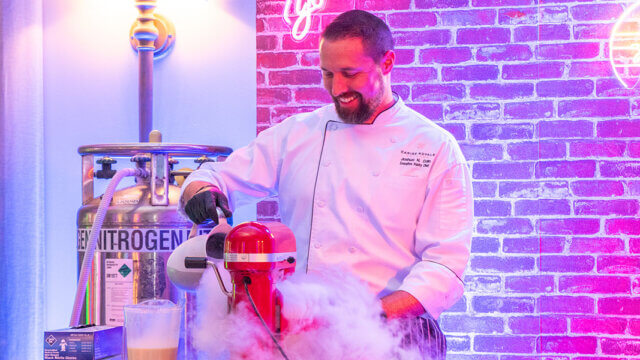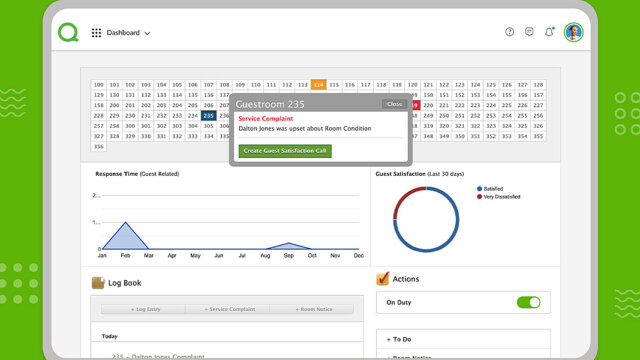The COVID-19 pandemic has put increased cleaning protocols into effect across the globe. With those protocols comes the increased use of cleaning products.
Recent CDC data shows a spike in reports of toxic exposures that it believes is tied to the use of common cleaning products. Almost all cleaning products have some level of toxicity, and they are subject to testing to determine safe levels—but, they have never been tested for the volume and frequency of use they’ve seen since the start of the pandemic. Increased toxic exposures could lead to lawsuits against major consumer brands. But this isn’t just about household use—think of the hundreds of thousands of high-traffic food and retail businesses that are now sanitizing their entire premises multiple times a day.
Hotel Business spoke with Sean Stadelman, a toxic tort litigator with Goldberg Segalla to find out what the hospitality should know about the topic.
 How important is it for the hospitality industry to be aware of toxic exposures? Potentially toxic exposures from cleaning and other products can lead to injury or illness if people come in contact with hazardous substances contained in the products or do not use the products properly. The risk depends not only on the product (and its components), but also the way the substance enters the body and importantly the amount that enters the body. Harm can occur suddenly or over extended periods of time. Some people are more susceptible than others to certain toxins.
How important is it for the hospitality industry to be aware of toxic exposures? Potentially toxic exposures from cleaning and other products can lead to injury or illness if people come in contact with hazardous substances contained in the products or do not use the products properly. The risk depends not only on the product (and its components), but also the way the substance enters the body and importantly the amount that enters the body. Harm can occur suddenly or over extended periods of time. Some people are more susceptible than others to certain toxins.
In the hospitality industry, many cleaning products that are used contain potentially toxic substances that pose both acute and long-term risks to employees and/or customers. With the increased use of sanitizing products due to the pandemic, the potential for toxic exposure has increased and thus it is important that the hospitality industry be prepared to mitigate those risks.
What types of toxic exposures are possible in hospitality settings? How have they increased since the start of the pandemic? Cleaning and disinfecting products necessarily include potentially hazardous substances that can get into the body through the skin, eyes, nose and throat. This can occur with cleaning, cooking and grounds staff members, but also guests who may use or be exposed to certain cleaning products.
An analysis of data from exposures reported to the National Poison Data System shows that from January-March 2020 there was a 20.4% and 16.4% overall increase in exposure calls compared to the same time period the previous two years, respectively. That data does not show a definite link between exposures and COVID-19 cleaning efforts, but there is apparently a temporal association with increased use of cleaning/disinfecting products.
Simple hand sanitizers can pose exposure risks to toxins. For example, the FDA has a list of hand sanitizer products that is hundreds of line items long because the sanitizers when tested contain methanol, which can be life threatening. Consumer Reports published a report early in 2020 regarding the fact that disinfecting wipes can contain EPA-registered pesticides.
There are also more subtle risks. For example, many tertiary and quaternary amines which are present in personal care and household products (including cleaning products) are known to be N-nitrosodimethylamine (NDMA) precursors. NDMA is classified as a B2 (probable human) carcinogen. NDMA can be unintentionally produced through chemical reactions. For example, it is an unintended byproduct of chlorination of wastewater and drinking water at treatment plants that use chloramines for disinfection.
Exposure risks from hand sanitizers to drinking water may be vastly different, but they are only examples of how staff members and customers alike may be exposed to toxins in a hospitality setting.
What can be done to handle the potential risks for businesses? Much can be done to mitigate these risks. Certainly, contractual indemnification is an option, but that does not always alleviate the exposure depending on the law of the jurisdiction where the exposure occurred. Proper personal protective equipment, warnings and reminders about misuse which may mean overuse of products are some of the ways that risk can be mitigated.
Supply chain testing and documentation of product contents is an area where the hospitality industry can stop the risk from entering the building. In-house monitoring for signals within the medical or scientific literature regarding products and product contents is another strategy to minimize risk and remain state-of-the-art with the processes in place to ensure staff and customers are not exposed to levels of a substance that is potentially toxic.




